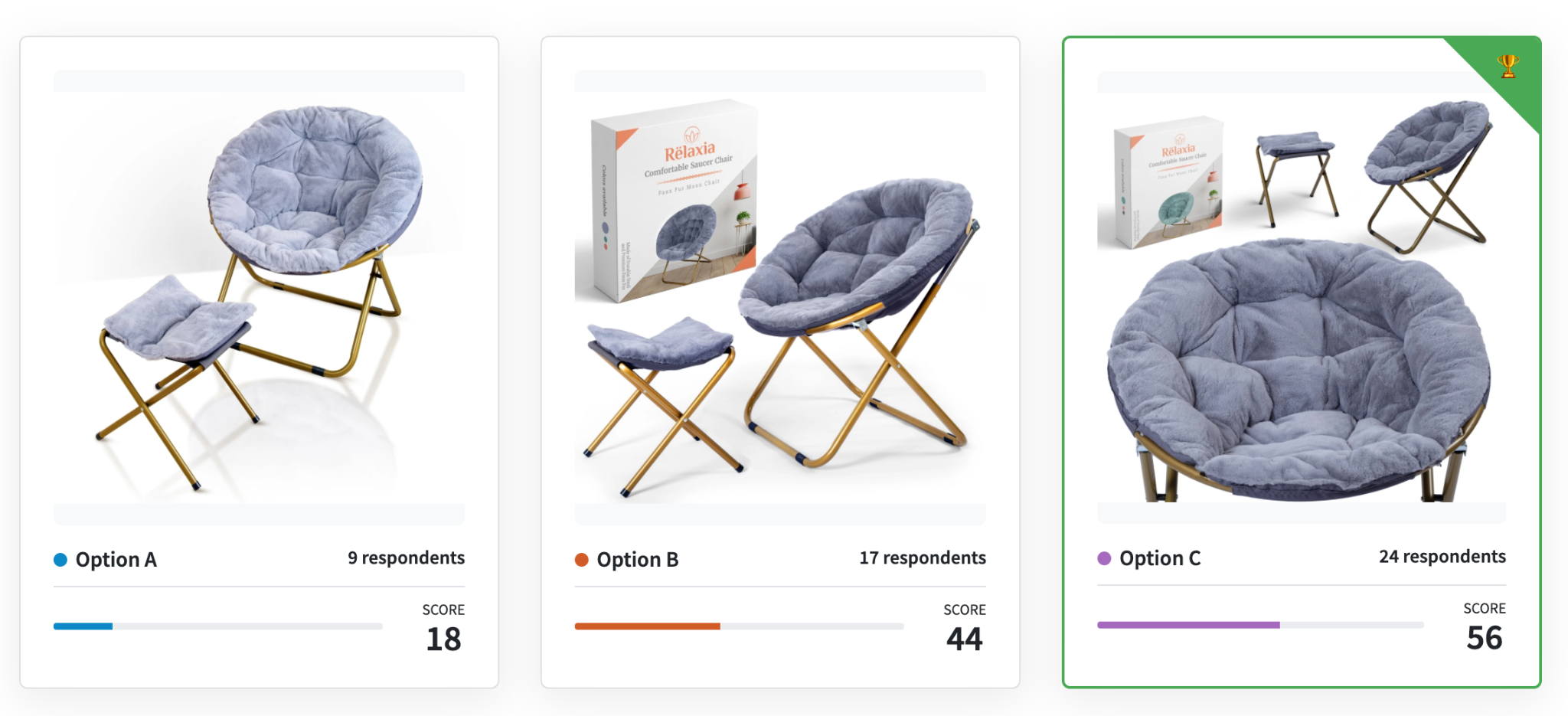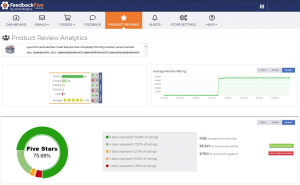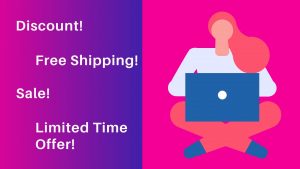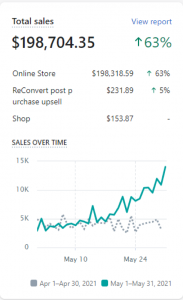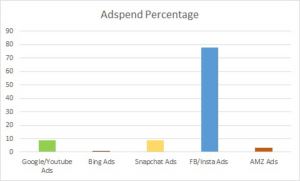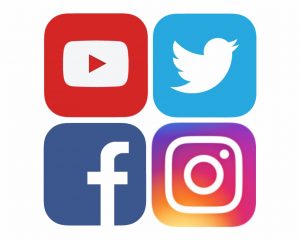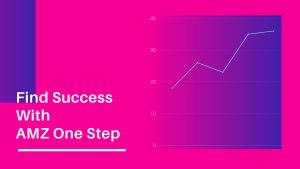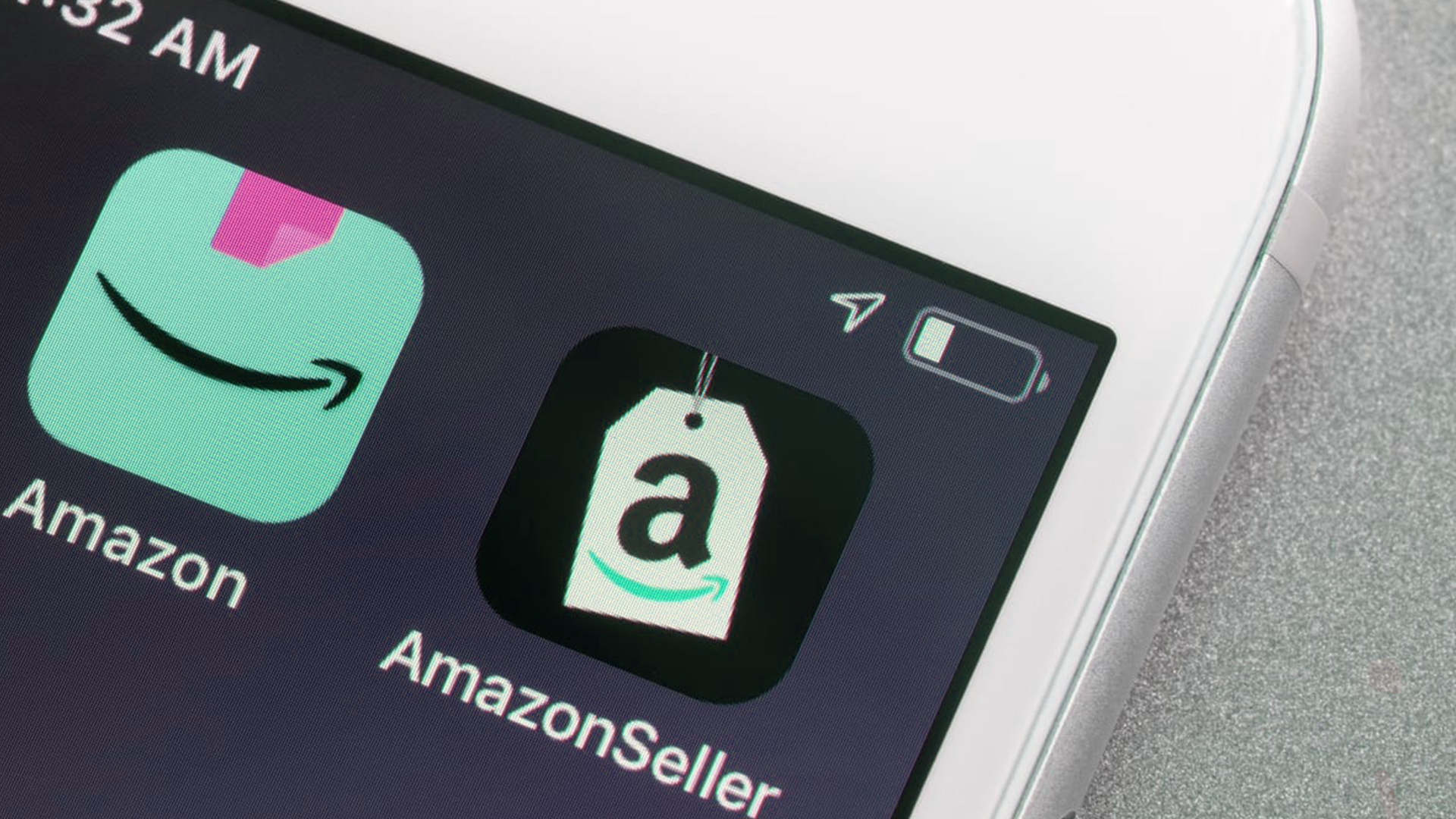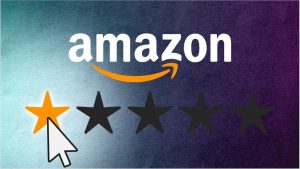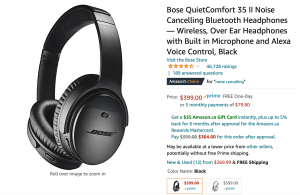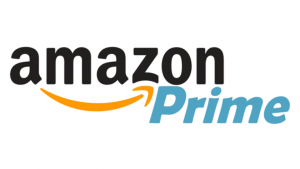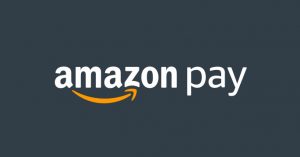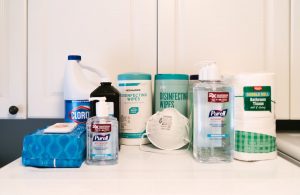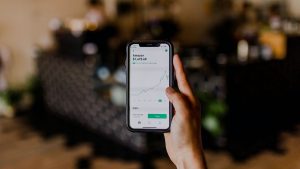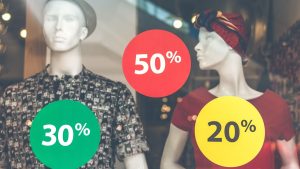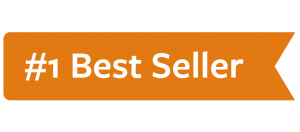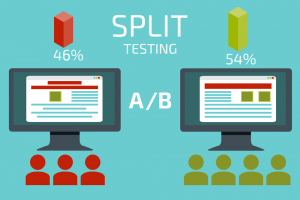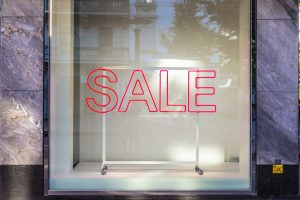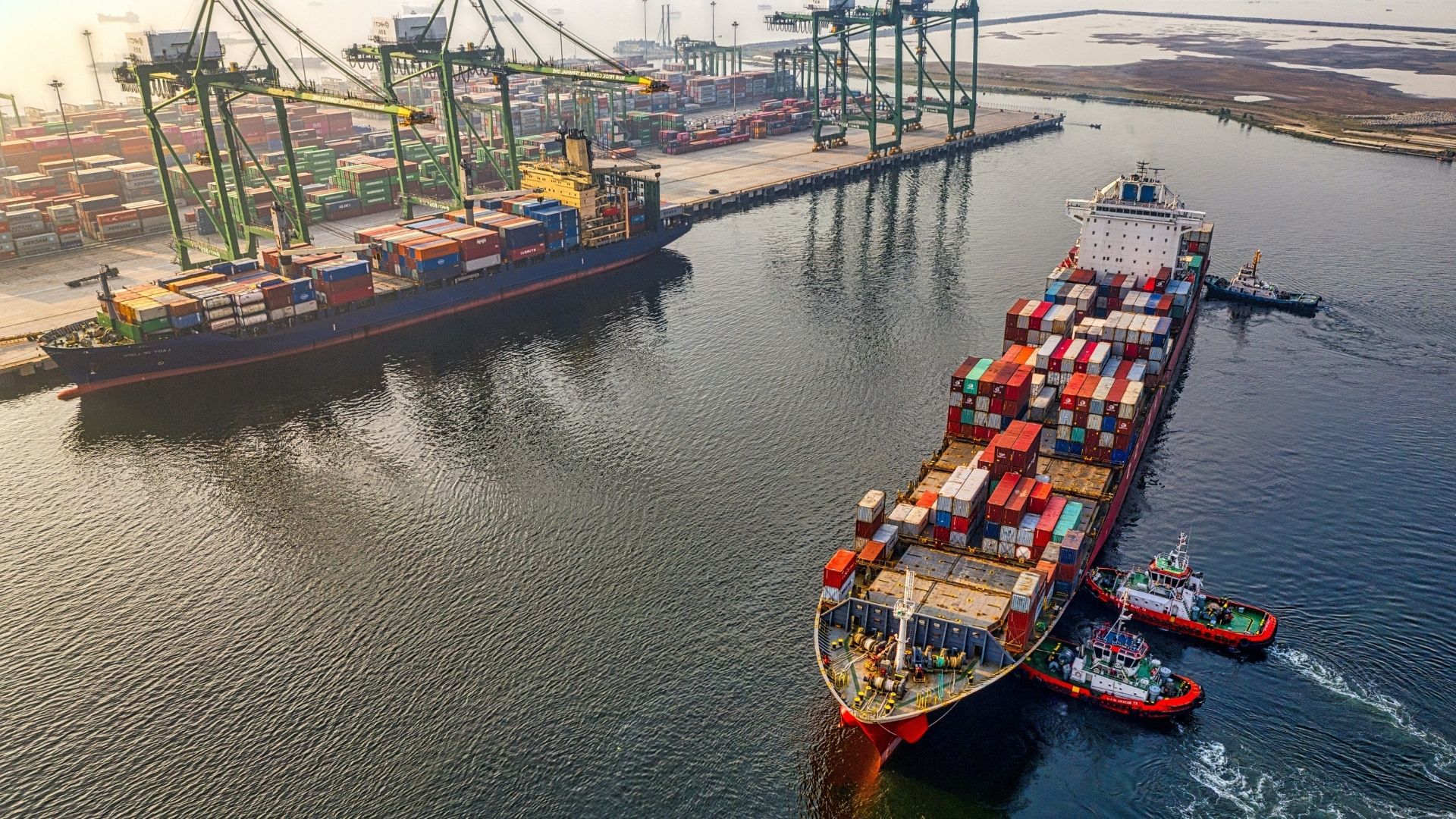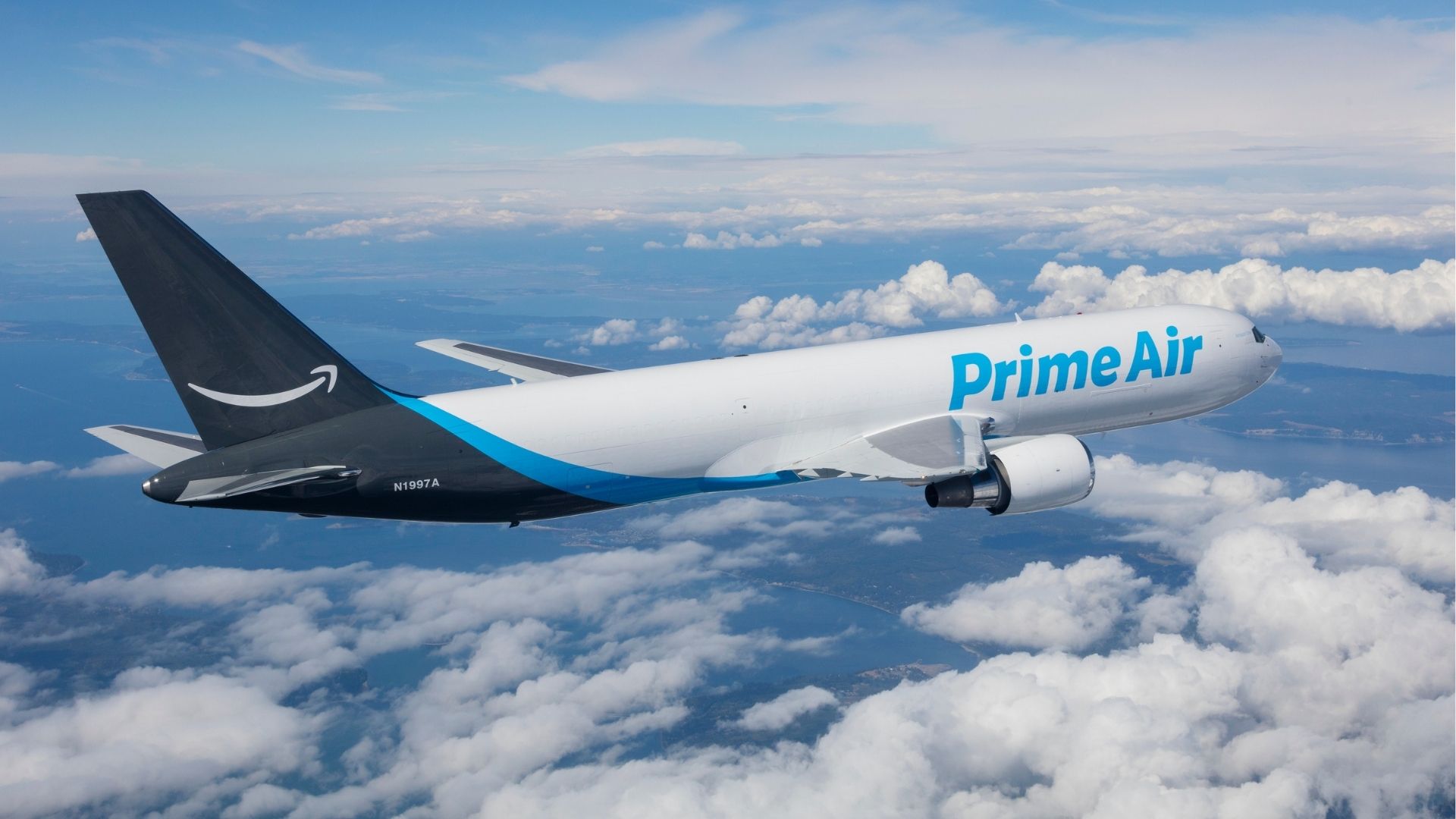According to a 2022 statistic posted by Google, the first three search results get an average of about 68.1% of the CTR when compared to the rest. As business owners or as a marketer, we understand that success on Amazon requires a clear understanding of Amazon Click Through Rate (CTR).
Within this article, we’ll break down everything you need to know about Amazon CTR, including how to measure it and how to improve it. We’ll also provide some real-world examples to help you understand how CTR works on Amazon and the importance of Amazon PPC CTR on your marketing. So, if you’re ready to take your Amazon marketing game up a notch, then keep reading!
The Amazon Journey:
A great way to establish the importance of Amazon Click Through Rate is by understanding the journey a user has to take to purchase from Amazon.
If you brought $100 to buy something from any Brick and Mortar location, such as Forever 21 or Old Navy, you would only have a limited amount of options that you could choose from.
On the other hand, if we provide you $100 to buy anything of your choice from Amazon, you wouldn’t have to rely on the layout of the store to help navigate your shopping experience. All you would have to do is search for the item you are currently interested in – by using the Amazon search engine.
The result page comprises a list of products, either paid for their top spot on the search result page by using Amazon PPC or generated organically due to high demand, both result in the products getting high CTR due to their placement. Since there are so many choices to compare; How do you, as an Amazon Seller, ensure that potential buyers are attracted to your listing?
Within that split second, a total of 4 major things are being compared:
- Product title.
- Product price.
- Main product image.
- Product review count/rating (on a scale from 1-5).
Based on the variables mentioned above, a customer will likely decide if a product (as shown in the main image) is worth the price. They’ll decide whether they will click and continue to your product page to learn more, which will earn you a point in your click-through rate metric!
Now, if your advertisement was paid for by PPC, this will cost you. As a result, you need flawless Amazon PPC Optimization to ensure a consistent, high Click-Through Rate. There are a number of ways to optimize your PPC campaigns, i.e., using an Amazon PPC service by an agency, by yourself, or even by utilizing certain optimizing tools available in the market. However, a reputable Amazon Agency that specializes in Amazon PPC Metrics and Amazon Advertising Metrics can better assist you through this process, especially if you are just starting out.
What Is Amazon CTR?
Amazon CTR (or Amazon click-through rate) is the percentage of people who see your ad on Amazon and then click through to your product page. Knowledge of your Amazon CTR is crucial for knowing if your PPC efforts are successful.
-
How Do I Calculate My Click-Through-Rate?
The click-through rate is a measure of how many clicks are obtained for every impression. For example, if you had 5 clicks and 100 impressions, the click-through rate would be 5%.
-
How To Find Your CTR On Amazon?
To find your CTR on Amazon, all you have to do is go to your Amazon Ads Account and see how many people have clicked and viewed your advertisement.
Why Does Click Through Rate Matter On Amazon?
The Amazon click-through rate measures how well an ad campaign, keyword, or listing performs. By understanding how clicks impact your bottom line, you can make data-driven decisions about where to focus your marketing efforts; whether it is measuring your Amazon Advertising Impressions or learning how to optimize your Amazon PPC CTR (click-through rate) on your product listings.
Referring back to the previous example, on Amazon, CTR is how people get to visit your virtual store and look at your products on sale.
However, if you have two stores on the same street; one is a run-down warehouse with high-quality products and the other is a beautiful store with the same quality of products but displayed in a pleasing and professional way. Which store do you think will get more customers?
Obviously, it will be a beautiful store with a more professional display case. This same phenomenon is applicable to your main product image on Amazon. The more high-quality and professional-looking it is, the more customers will trust your advertisements enough to click on them and buy.
This is why that main image is vital to selling, whether we are advertising digitally or just in-store, it is the secret sauce to winning the CTR game.
Another great way for Amazon sellers to make higher profits is by increasing their clicks and conversions with strategies focused on PPC Ads. As a result, you can enjoy both having higher selling rates and lower spending on advertisement optimization with top spots on result pages.
What Are The Causes Of A Low CTR Rate?
Have you ever clicked on a search engine ad, only to be taken to a website that’s nothing like what you were expecting? Chances are, your CTR (click-through rate) was low. The average CTR for search engine ads is just 2.7%.
So what contributes to this low CTR rate? Low click-through rates can result from two primary reasons; irrelevant ads and the ad position.
-
The Ad position:
The way you position your ad will have a major impact on how many people click it and, therefore, the overall conversion rate. For example, on Amazon, top-of-the-page ads get clicked by visitors, while bottom-positioned banners can go unnoticed or missed altogether. It happens because they’re hidden underneath other high-ranking content until someone scrolls down enough for them to notice!
-
Irrelevant Ads:
You can use negative keywords to exclude search terms from your campaigns and help you focus on only the keywords that matter to your customers. This will allow you more control in terms of to whom your products are being advertised.
A good example of this is when retailers add the word “free” as a negative keyword in their listing or PPC campaign. This will ensure that any customer not willing to pay for the product will not be shown their advertisement and click on it in hopes of it being free of cost. This will significantly improve the CTR rate as the advertisement will only be clicked by people willing to actually purchase the product.
What Is A Good CTR Rate?
As a business owner or marketer, you’re always looking for ways to improve your click-through rate…but, what CTR should I be aiming for?
A good CTR rate for any campaign is considered to be 0.5% and above.
A well-performing campaign, with an average of 2% click-throughs can increase a product’s ranking by hundreds of positions. You must be investing time and resources where there is potential for a return on investment.
How Do Different Advertising Placements/Positions Affect CTR?
Amazon’s click-through rate is one of the most important metrics for measuring the effectiveness of an advertising campaign. But what factors influence CTR?
First, let’s take a look at how different advertising positions/placements affect CTR:
-
Top Of Search Page:
The CTR of an ad campaign can be dramatically affected by where it’s placed on the search page. Moving from the top to lower down the search page will result in 50% fewer overall clicks, so if your goal is just to get as many people clicking on ads – then remaining at the top is crucial and you must use bid placements to increase that!
-
How Does Organic Ranking Fit Into All Of This?
Organic searches often get sidelined due to the constant battle to stay on top of Amazon search results. Therefore, more and more businesses are turning to Cost per click Amazon campaigns utilizing PPC to increase their overall sales and advertisement performance on Amazon.

How do Different Types Of Advertising Types Affect The CTR?
Ads can be divided into three main categories based on Amazon PPC Metrics: Sponsored Products (SP), Sponsored Brands (SB), and Display Ads (DP).
The Sponsored Products have a median CTR of around 0.42%, while the Sponsored Brands have approximately 0.38%. Next up, we have Display Ads, which typically offer higher clicks than other types at about 1%.
With display ads, these rank organically in relatively unique positions throughout Amazon (ie. on-page, off-page and on competitor listings so there is a suite of considerations when measuring things such as CTR.
Bonus Tip: If you want to increase your click-through rate on Display Ads running on competitor ASINS, use a coupon to make the listing POP out on the page.
In the image below, you’ll see I highlighted the major locations for a display ad but the one in the bottom right has a 8% off coupon which is enabled to be shown on the ad itself. One unique way to stand out!
How To Organically Improve The CTR Rate?
Every business strives to improve its click-through rate (CTR), however, not everyone knows how to do it correctly. Here are some organic methods of improving your CTR without resorting to spammy, or deceptive tactics.
-
Title:
Product titles present an opportunity to personalize your products and make them stand out from the rest of your competition.
Narrowly focused keywords within your captions help match online shoppers’ searches, increasing CTR percentage by indicating how a product will benefit from your product buyer, or solve a problem.
The key is getting creative with words that appeal specifically to what users want!
Here’s a great example of a good vs bad product title image so you can have an idea. The more relevant, the better.
Image from here: https://www.shopdoc.de/amazon-product-title/
-
Images:
High-quality front/main images will always perform better than low-quality front images. This is because online shoppers want to see exactly what they are buying, avoiding any chance of receiving something unexpected.
Another reason how this aids in improving CTR is that people tend to zoom in on the main image and inspect the product before making their decision on whether or not to click on the advertisement.
Add an image here Francis for a front image with an upshot
One way you can optimize your product photography is to shoot from a slightly downward angle so that your product can appear larger in size.
You can spice the rest of the images in a variety of ways like including loads of different angles, using your product packaging as the background, and even incorporating the product in a real-life setting (not on your front image as it’s against terms of service, but on secondary images). However, make sure that the product is the star of every product image you select for your listing.
The key is to look at what your competition is doing, and ask yourself “how could I do this better”?
You can also use platforms like PickFu to A/B test different images to see what works best!
-
Badges / Coupons:
Online shoppers are used to being bombarded with coupons and badges while browsing the internet. Although it may seem cliche and overused, they have been proven to influence users into buying products more frequently. As a retailer on Amazon, you can give your customers various promo codes and coupons for up to $50 discounts on your PPC ad campaigns.
There are even certain promotions in which a limited number of discounts are offered on a product on Amazon for a short period. These promotions are called lightning deals and can range from 10% to 60% discounts products.
Add an image for Coupons on Amazon (maybe an image explaining all the options available and so forth if you can find an image like this?)
-
Reviews:
A product with several positive feedbacks will gain more trust with visitors when compared to one that only has 1-2 neutral, or negative reviews.
Ensuring that your buyers are left feeling satisfied will help with organic revenue moving forward. A good rule of thumb for Amazon listings is a minimum of 25 reviews per listing.
-
Price:
Price is critical to the success of any Amazon Product Listing. Customers are drawn toward lower prices so it’s important to see what your competitors are pricing their products at when deciding your costs.
Fulfillment Model (FBA vs. FBM):
There are two types of fulfillment models provided by Amazon.
FBA or ‘Fulfilled by Amazon’ means that you sell your product, and then send it to an Amazon fulfillment center for them to receive, and then ship out all your orders within two days maximum! Faster delivery improves customer satisfaction and this leads to positive customer feedback. This positive feedback, as aforementioned, will boost trust for your brand among the users visiting your advertisement to buy your product. Thus, improving the CTR rate.
On the other, FBM or ‘Fulfillment by Merchant’ means that the merchant handles storage, as well as all aspects of order fulfillment. The product listings are on Amazon, but they’re listed as fulfilled from another store, the store that the merchant themselves own- so you don’t need to pay for them to be stocked inside of Amazon FBA warehouse!
This also means that the merchant handles shipping of the product as well, which can greatly affect the CTR rate especially if the merchant is making late deliveries or if the listing is well beyond 2-3 day shipping windows.
The difference between FBM & FBA is how much responsibility you hold for the inventory/fulfillment process from start to finish. However, if you’re having issues with getting a good click-through rate on your listings, we recommend using FBA to start. This is because FBA retailers on Amazon come with a prime badge that improves CTR instantly given the relationship between customers and prime.
Amazon Prime & Conversion – are they correlated?
Adding to the previous section, Amazon has some of the highest conversion rates of any eCommerce marketplace, which is why so many firms choose to sell there. A good Amazon conversion rate for a non-Prime buyer is around 10-15% on average. Due to the frequency with which they are viewed, this number reduces to 3.32 percent among the Top 500 merchants. The conversion rate for Amazon Prime subscribers is much higher, at 74%.
It’s vital to note that the definition of a good conversion rate varies by product and specialty. Customers are more inclined to look around and compare these products to similar products before making a final purchase on Amazon, so items that are more expensive ($100+) will often have lower conversion rates.
Again, it all depends on the category, item, price, and much more when considering the data to be explored and how to measure success for your brand on Amazon.
How To Use Amazon Ads To Improve The CTR Rate?
It doesn’t matter if you are a small business owner, entrepreneur, or solopreneur; Amazon PPC is an important part of your marketing strategy. The more people who see your products on Amazon with increased visibility, the better chance you can make sales online.
Here’s a recap of how to improve your CTR:
- Encourage reviews and ratings.
- Target the most relevant keywords when spending money on ad placements
- Constantly optimize your Amazon PPC campaigns for improving CTR by reviewing your advertisement campaigns once launched with a key measure on impressions vs clicks.
- Hire an experienced Campaign Manager / Outsourced Freelancer or PPC Agency to consult once you’re spending more than $1000-$2000+ per month in ad spend.
- Keep an eye on your CTR on top-performing listings.
- Keep a pulse on competition, what their doing and where they’re pushing you out of the market in terms of what they’re doing better.
- A/B testing with PickFu using new images or titles every two to three months to improve the CTR constantly and try new listings.

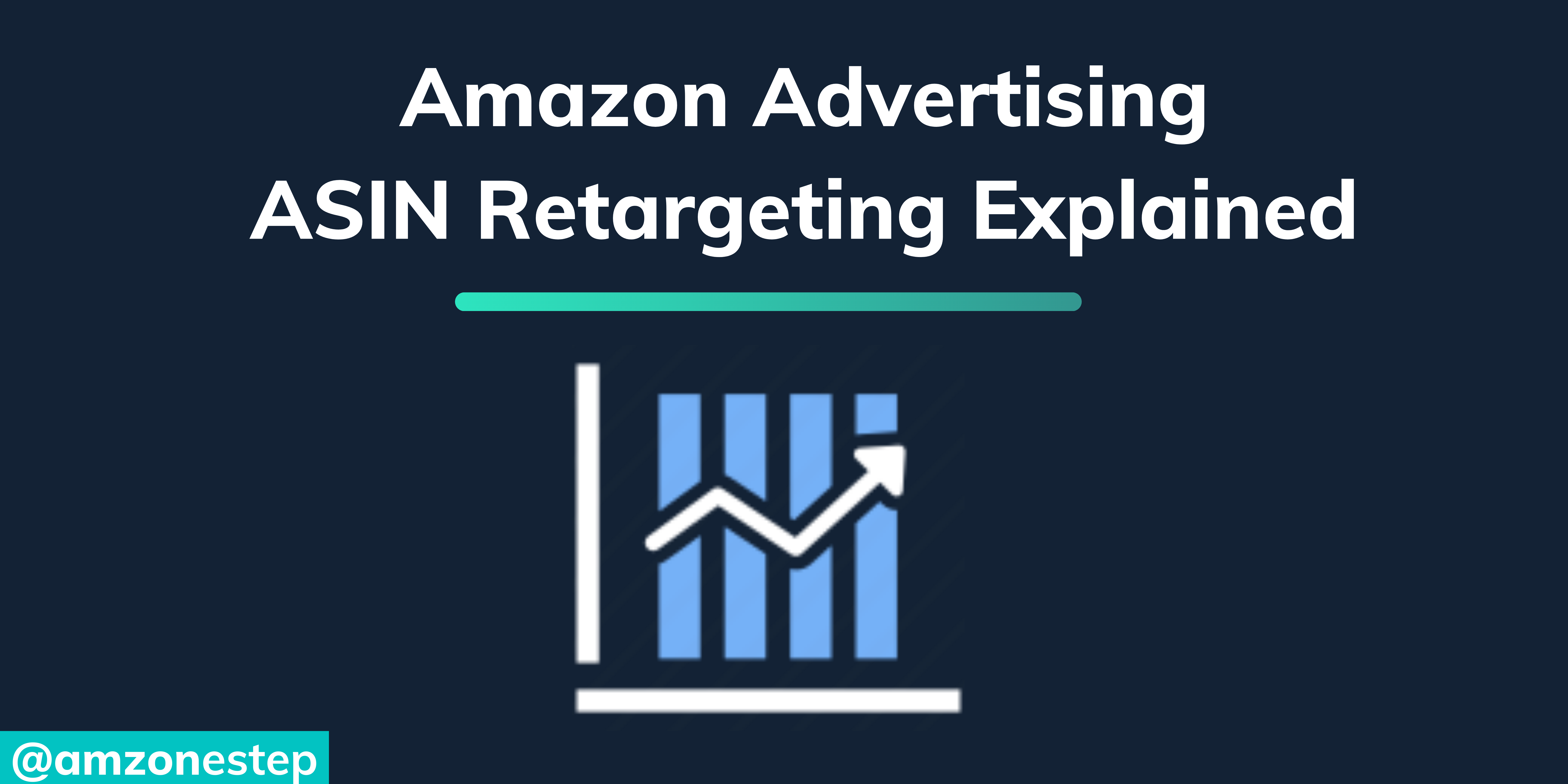





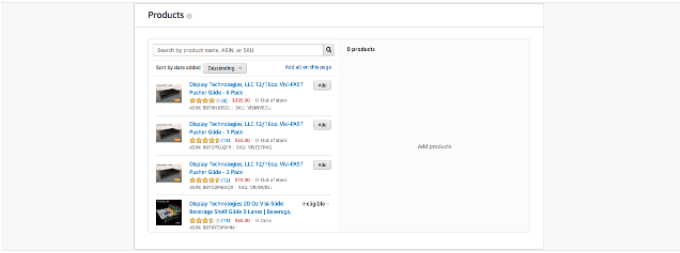

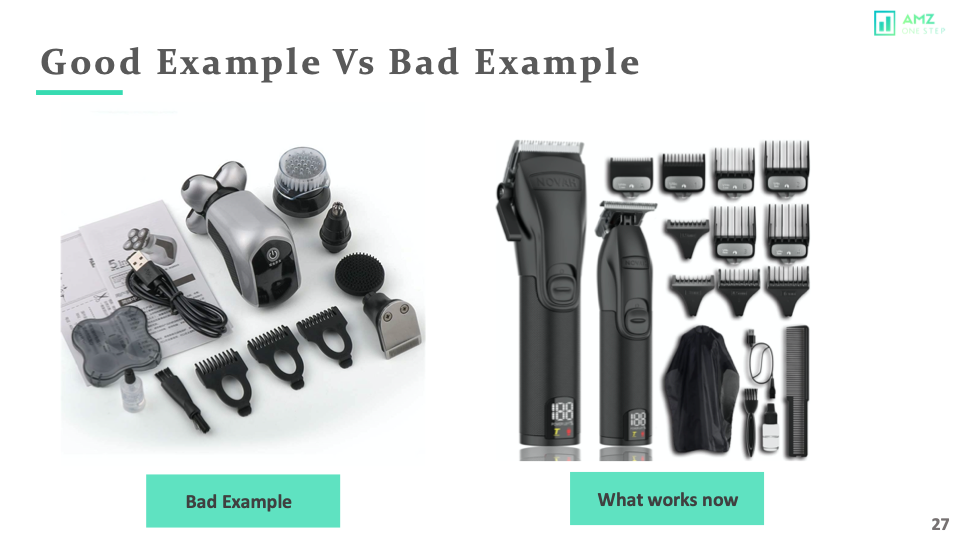



 The image on the left is the safest option; It is a pure
The image on the left is the safest option; It is a pure 






















